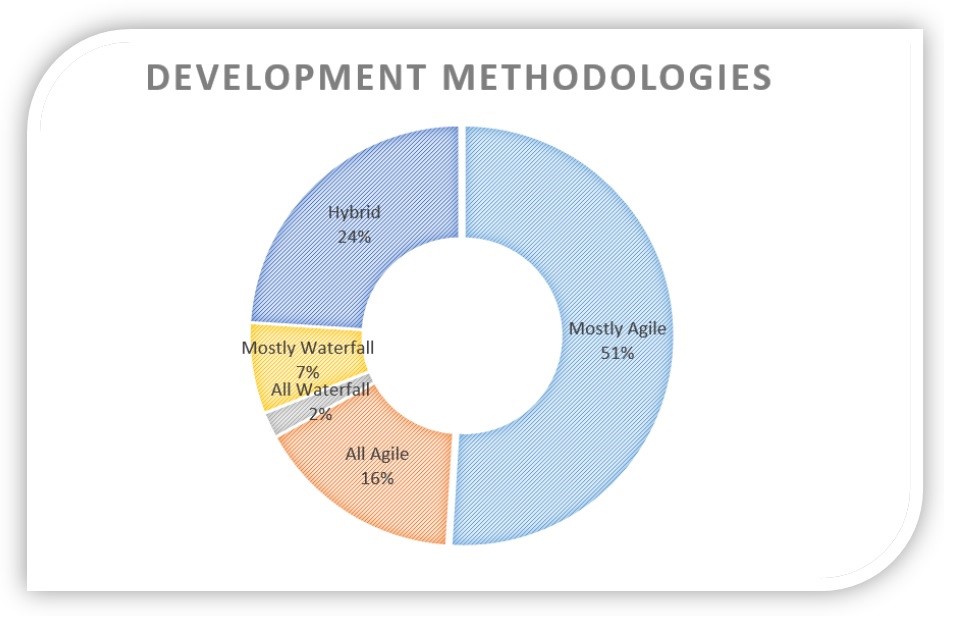As recently discovered by an HP study, Agile is now the overwhelming majority of development processes. As the agile development methodology began showing up in companies around 15 year ago, it has been widely adopted and regarded as the best way to create software and applications. Here’s what the study discovered:
With the traditional approaches to development only at about 9%, the effect Agile has had on the development industry is enormous. Even though the agile methodology sprouted up a while ago, most of the currently agile developers only became so in the last five years.
Why has Agile become the norm?
In the same survey by HP, it was apparent that Agile did two things better than its traditional counterpart: create better connections across teams in an organization and increase the overall quality of the software they are creating.
By increasing cross-team communication, companies are effectively able to make their business decisions with more information, thus better overall results.
But having better communication doesn’t only allow for the ability to make better decisions, it leads to a number of different things. So far in our experience we’ve seen benefits like being able to work with and involve the client more in the development process.
Transparency is much more prevalent with agile decision making because of all the different break-ups of a larger project, which allow the client to make smaller and more specific decisions on how they want things to turn out.
Change adaption happens fluidly in the agile development process as there are constantly opportunities to refine the products functionality.
Focusing on the end user is easier within the agile development methodology as user stories and testimonials are commonly incorporated into creating the end software. There are also more opportunities to beta test as each sprint gives valuable feedback.
Overall quality improvements was an expected feedback from the survey as agile developers for years now have been reporting better products as a result of the process itself. As a large project is broken down into much smaller parts and segmented into specialized teams, bugs and defects are quickly remedied instead of discovering them after the product has been rolled out.
Agile decision making is more than an alternative methodology, it is a powerful tool that more and more companies are adopting to create the best software this world has ever seen. By controlling more variables and increasing collaboration across different teams, agile development allows for better decision making across the board.




